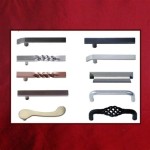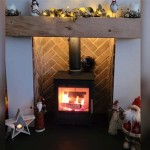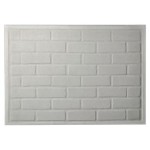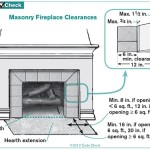Determining Optimal Height for Hanging a TV Above a Fireplace
Mounting a television above a fireplace is a common design choice in many residences. It offers a space-saving solution and can create a focal point in a room. However, the elevated position often necessitates careful consideration of viewing angles and potential ergonomic issues. Determining the appropriate height for installation is crucial to ensure comfortable viewing and minimize neck strain. Factors such as fireplace height, viewing distance, screen size, and seating arrangement all contribute to the decision-making process.
The aesthetic appeal of this setup is undeniable, but prioritising comfort and preventing potential health problems should be paramount. Incorrect placement can lead to sustained upward gazing, causing discomfort and potentially contributing to chronic neck and back pain over time. This article will explore the critical considerations involved in determining the optimal height for a television mounted above a fireplace, aiming to provide a comprehensive guide for achieving a balance between aesthetics and ergonomics.
Understanding the Ergonomic Considerations
Ergonomics, the science of designing and arranging things people use so that the people and things interact most efficiently and safely, is central to determining the proper height for a television. The goal is to minimize strain on the neck and eyes during prolonged viewing. A primary ergonomic guideline suggests that the viewer's eyes should be level with the center of the television screen when seated. This position allows for a natural and relaxed viewing posture, reducing the likelihood of discomfort. Deviation from this ideal, particularly placing the television significantly higher, necessitates an upward tilting of the head, which can quickly lead to muscle fatigue and pain.
The severity of the ergonomic implications depends on how much the recommended viewing angle is exceeded. A slight upward tilt is usually manageable, but mounting the television too high can force the viewer to sustain an unnatural and uncomfortable posture for extended periods. This is especially pertinent for individuals who spend significant time watching television. Furthermore, the larger the screen size, the more important it becomes to adhere to ergonomic principles. A larger screen means a greater distance between the top and bottom edges, and a higher mounting position exacerbates the visual strain.
Beyond neck strain, an excessively high television placement can also lead to eye strain. The increased distance and angle of viewing can make it harder for the eyes to focus, contributing to fatigue and headaches. Therefore, even aesthetic considerations should be weighed against potential physical consequences. Utilizing adjustable mounts that allow for tilting can mitigate some of these issues, providing more flexibility in achieving a comfortable viewing angle. However, even with adjustable mounts, the inherent height limitation imposed by the fireplace remains a critical factor.
Analyzing Fireplace Height and Viewing Distance
The height of the fireplace mantel and the viewing distance from the seating area are crucial variables in determining the television's placement. A taller fireplace inherently limits how low the television can be mounted. Conversely, a shorter fireplace offers more flexibility in positioning. Measuring the fireplace height accurately is the first step in the process. From the top of the mantel to the ceiling, the available space dictates the range within which the television can be placed.
Viewing distance, the distance from the seating area to the television screen, also impacts the optimal height. A greater viewing distance allows for a higher mounting position without straining the viewer's neck. A general rule of thumb suggests multiplying the screen size by a factor of 1.5 to 2.5 to determine the ideal viewing distance in inches. For instance, a 55-inch television would ideally be viewed from approximately 82.5 to 137.5 inches (approximately 7 to 11.5 feet). If the viewing distance is at the higher end of this range, a slightly higher mounting position might be acceptable, but ergonomic considerations should still prevail.
It is important to physically simulate the television's placement before committing to a permanent installation. Using cardboard cutouts of the television's size and temporarily affixing them to the wall above the fireplace at varying heights can provide a visual representation of the final setup. Sitting in the primary viewing position and assessing the comfort level at each height can help refine the decision-making process. This method allows for a more accurate evaluation of the viewing angle and helps in anticipating potential neck strain issues.
Considering TV Size and Mount Options
The size of the television significantly influences the perceived viewing angle and the overall aesthetic of the setup. A larger television mounted too high will necessitate a greater degree of upward head tilt, exacerbating ergonomic concerns. It is generally advisable to opt for a slightly smaller screen size if the fireplace height restricts the ability to mount the television at an ergonomically sound level. Balancing the desire for a large screen with the practical limitations of the fireplace and viewing distance is critical.
Mount options also play a pivotal role in fine-tuning the viewing experience. Static mounts offer a fixed position, while tilting mounts allow for vertical adjustments. Full-motion mounts provide the greatest flexibility, allowing for both vertical and horizontal adjustments, as well as extension and retraction. A tilting mount can compensate for a slightly higher mounting position by angling the screen downwards, thus improving the viewing angle. A full-motion mount offers even greater adjustability, allowing the television to be pulled forward for closer viewing or angled to accommodate different seating positions within the room.
When selecting a mount, it is essential to ensure that it is compatible with the television's VESA (Video Electronics Standards Association) mounting pattern and that it can support the television's weight. A robust and reliable mount is crucial for safety and to prevent the television from falling. Professional installation is recommended, particularly if the fireplace is made of brick or stone, as improper installation can damage the wall and compromise the stability of the mount. Furthermore, considering the cable management is essential for a clean and aesthetically pleasing installation. Hiding cables within the wall or using cable management solutions can prevent unsightly wires from detracting from the overall appearance.
Addressing Heat Concerns and Cable Management
Mounting a television above a fireplace introduces the potential for heat damage. While modern fireplaces are typically designed with heat shields and proper ventilation, it is prudent to take precautions to protect the television from excessive heat exposure. Prolonged exposure to high temperatures can damage the television's internal components, shortening its lifespan and potentially causing malfunctions. Ensuring adequate clearance between the top of the fireplace and the bottom of the television is crucial.
Manufacturers typically specify operating temperature ranges for their televisions. Checking the specifications and monitoring the temperature near the mounting location can help identify potential heat issues. Installing a heat shield or deflector can further mitigate the risk of heat damage. These shields redirect heat away from the television, providing an additional layer of protection. It is also advisable to avoid using the fireplace while the television is in use, particularly for extended periods.
Efficient cable management is another critical consideration when mounting a television above a fireplace. Exposed cables can detract from the aesthetic appeal of the setup and create a safety hazard. Concealing cables within the wall is the most effective solution, but it requires careful planning and potentially professional assistance. Cable management kits offer a variety of options for routing cables behind the wall and concealing them behind trim or covers. These kits typically include tools and accessories for drilling holes, routing cables, and securing them in place. Alternatively, cable raceways can be used to conceal cables along the surface of the wall. These raceways are available in various colors and styles to blend in with the surrounding decor.
Furthermore, planning for power outlets and HDMI connections is essential. If these connections are not already present near the mounting location, it may be necessary to install new outlets or run extension cords. However, it is crucial to avoid running extension cords behind the wall, as this can pose a fire hazard. Instead, it is recommended to install a dedicated power outlet behind the television. Finally, labeling cables can help prevent confusion and simplify troubleshooting in the future.
Can I Mount A Tv Over My Fireplace Heatilator

Can I Mount A Tv Over My Fireplace Warming Trends

Can You Put An Electric Fireplace Under A Tv And Minimum Distance

How High To Mount Tv Above Fireplace Best Safety Tips

Things To Consider Before Mounting Your Tv Over Fireplace
Is A Tv Over Fireplace Too High Quora

Safely Mount A Tv Above An Electric Fireplace Touchstone Home S Inc

Mounting Your Tv Above Fireplace

Is Your Tv Too High Learn Ergo

What Size Samsung Frame Tv Over Your Fireplace Chrissy Marie Blog








